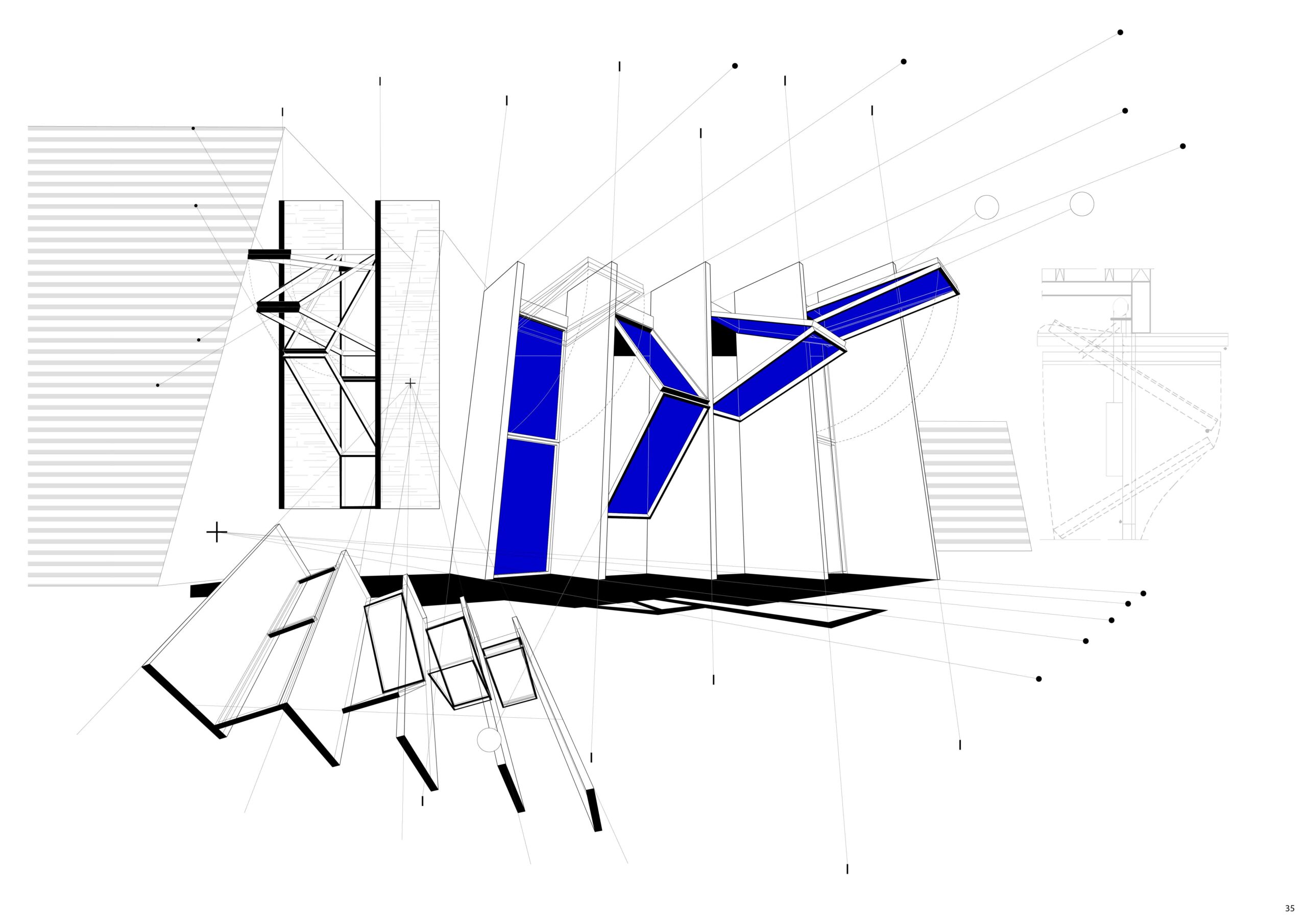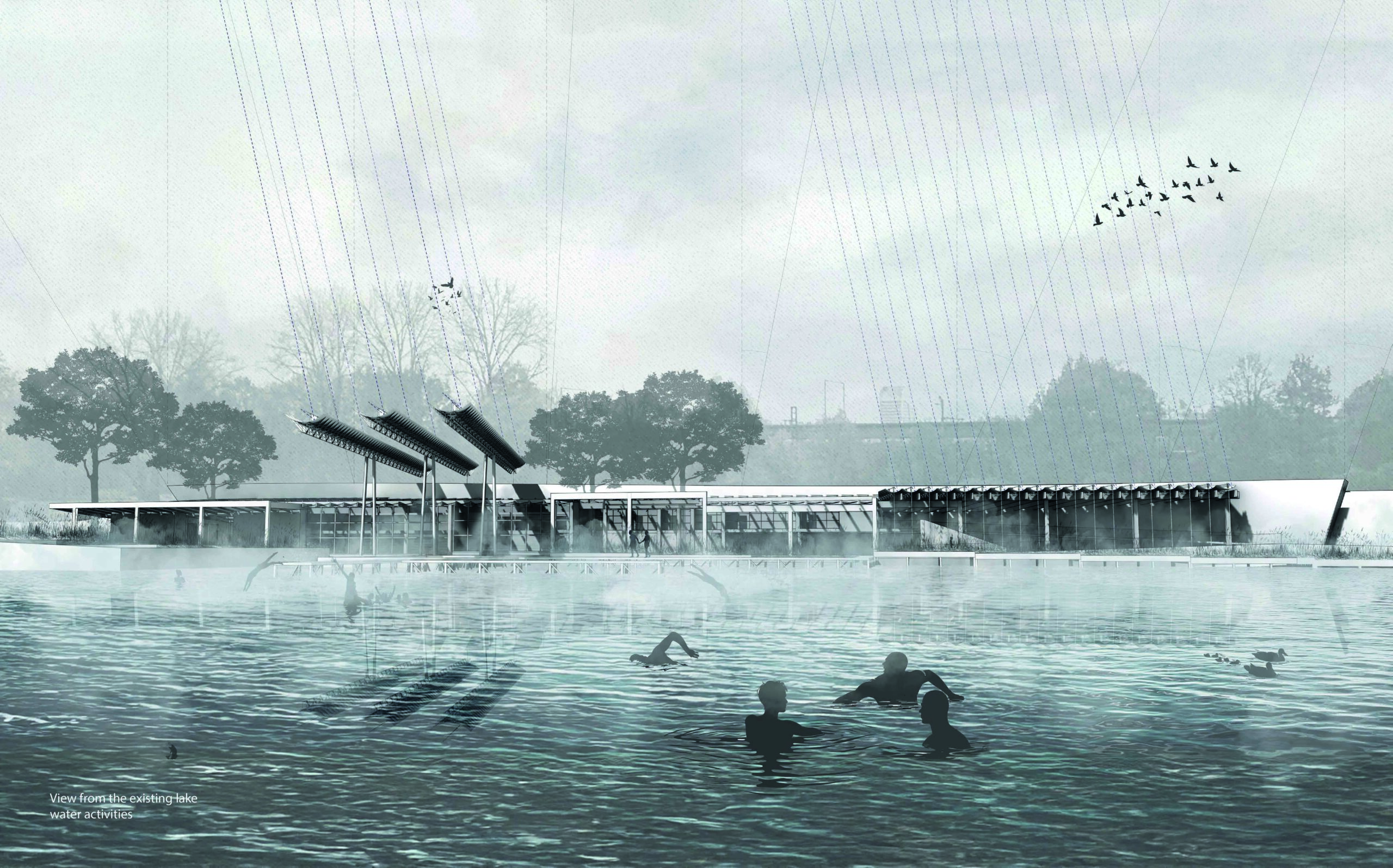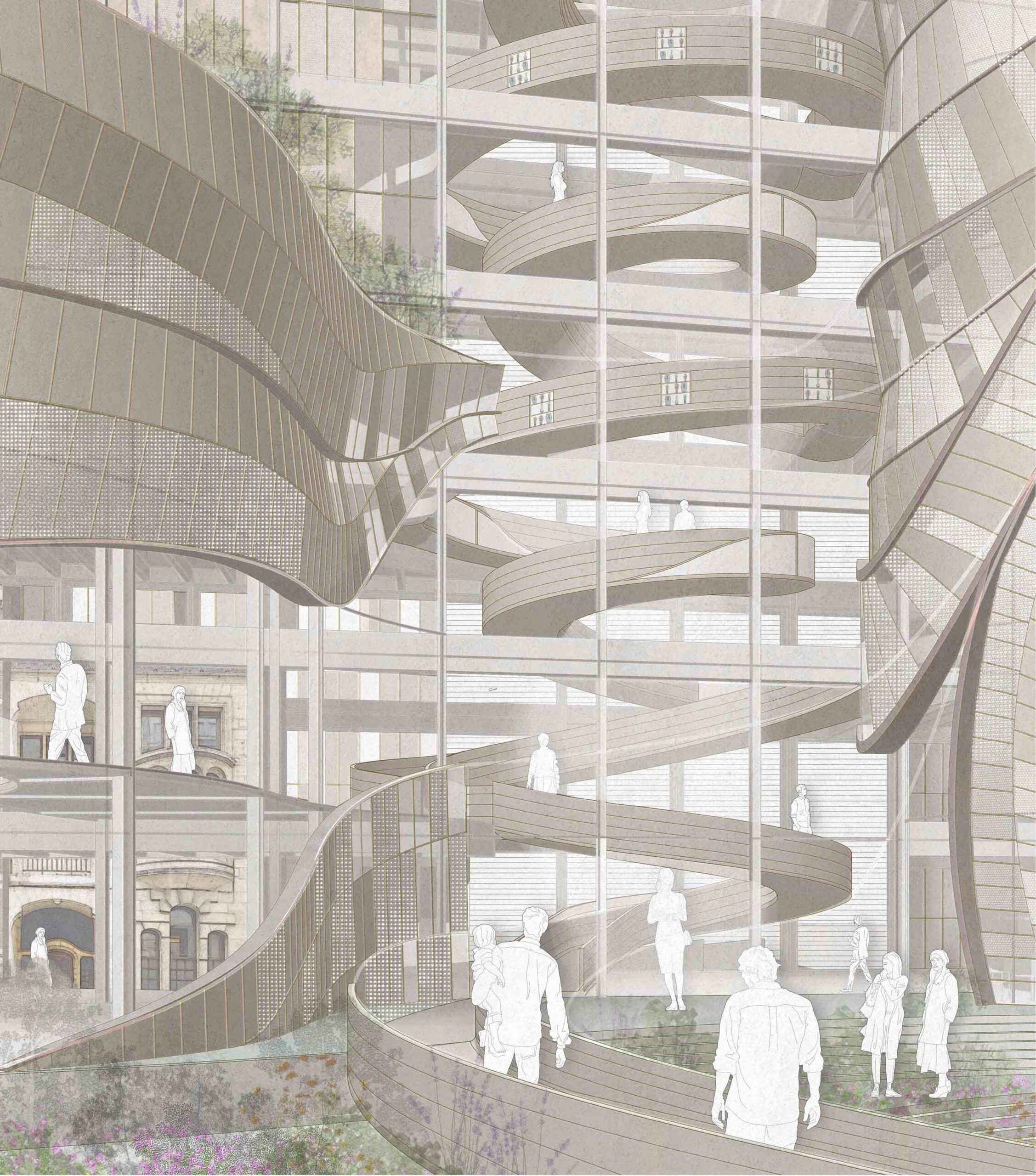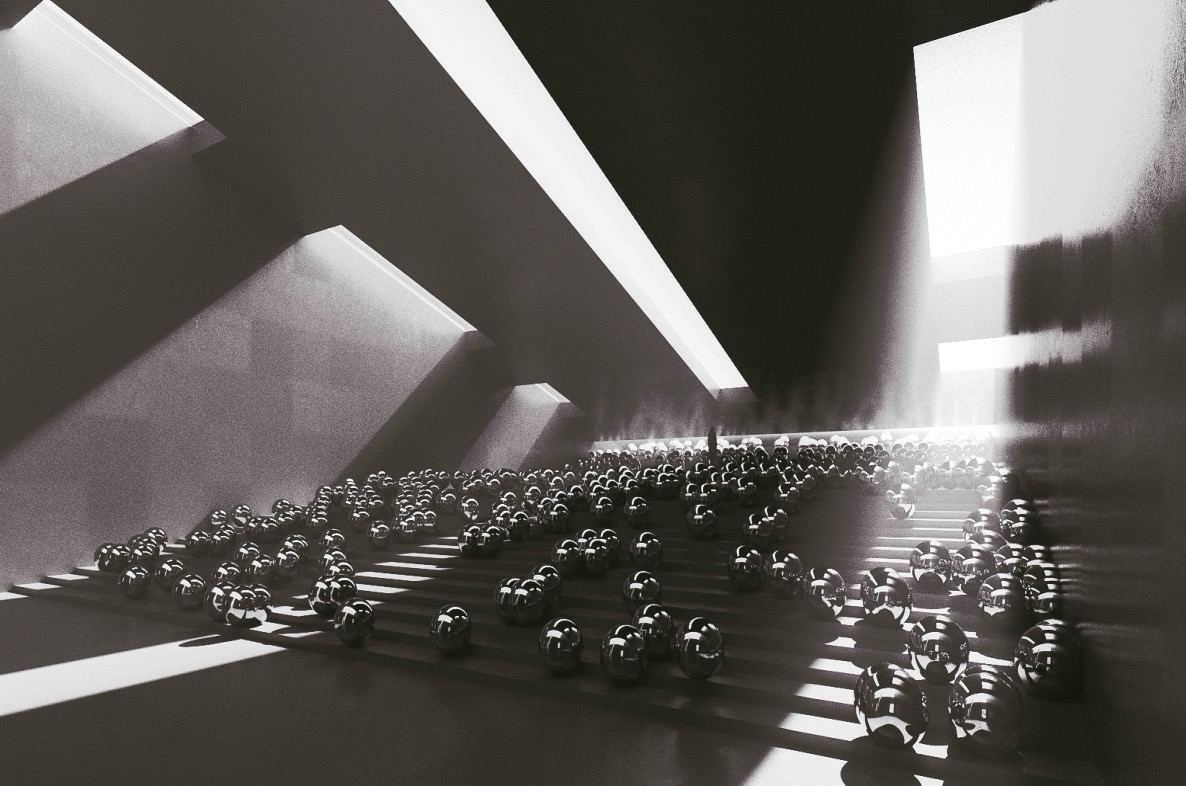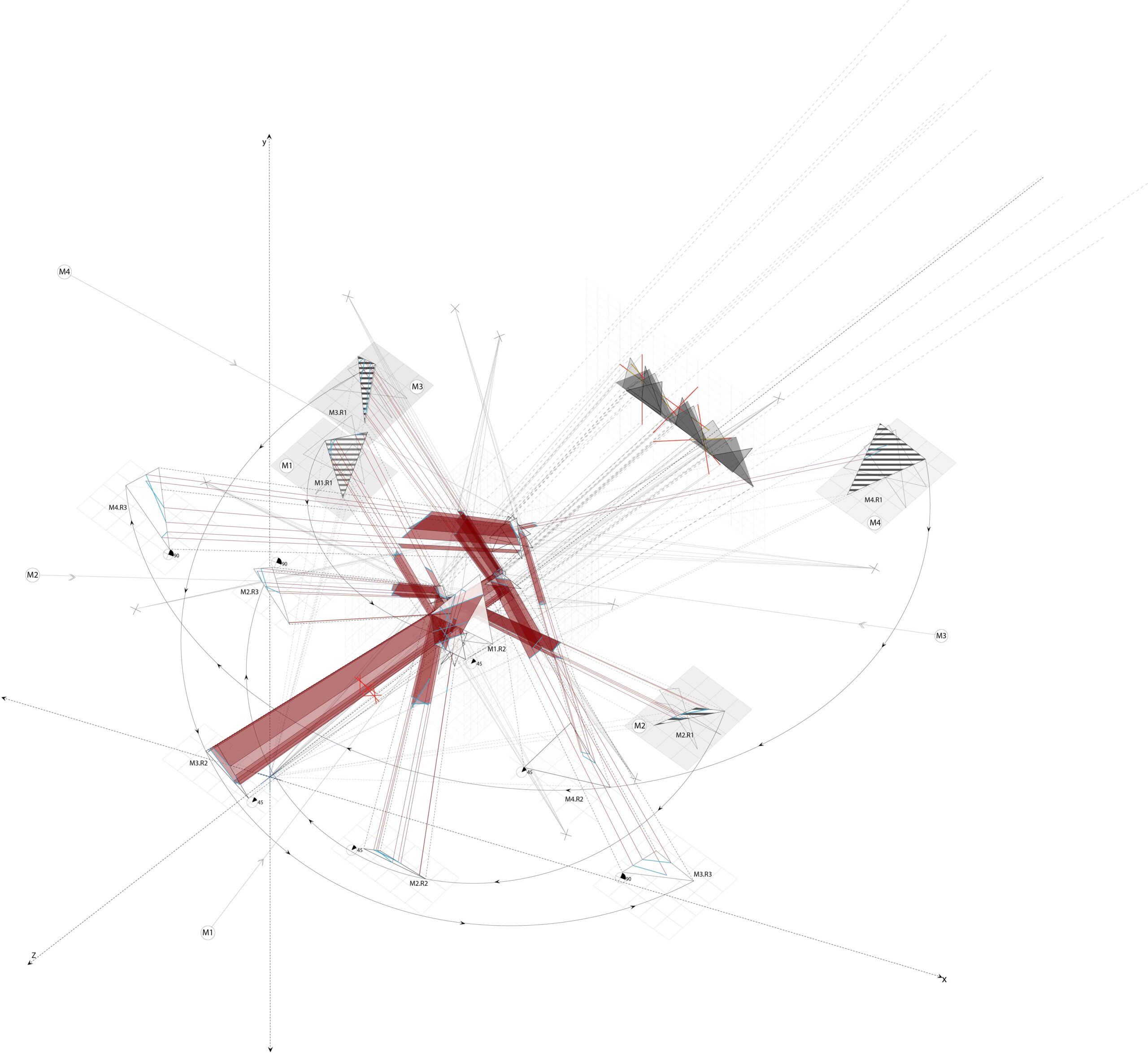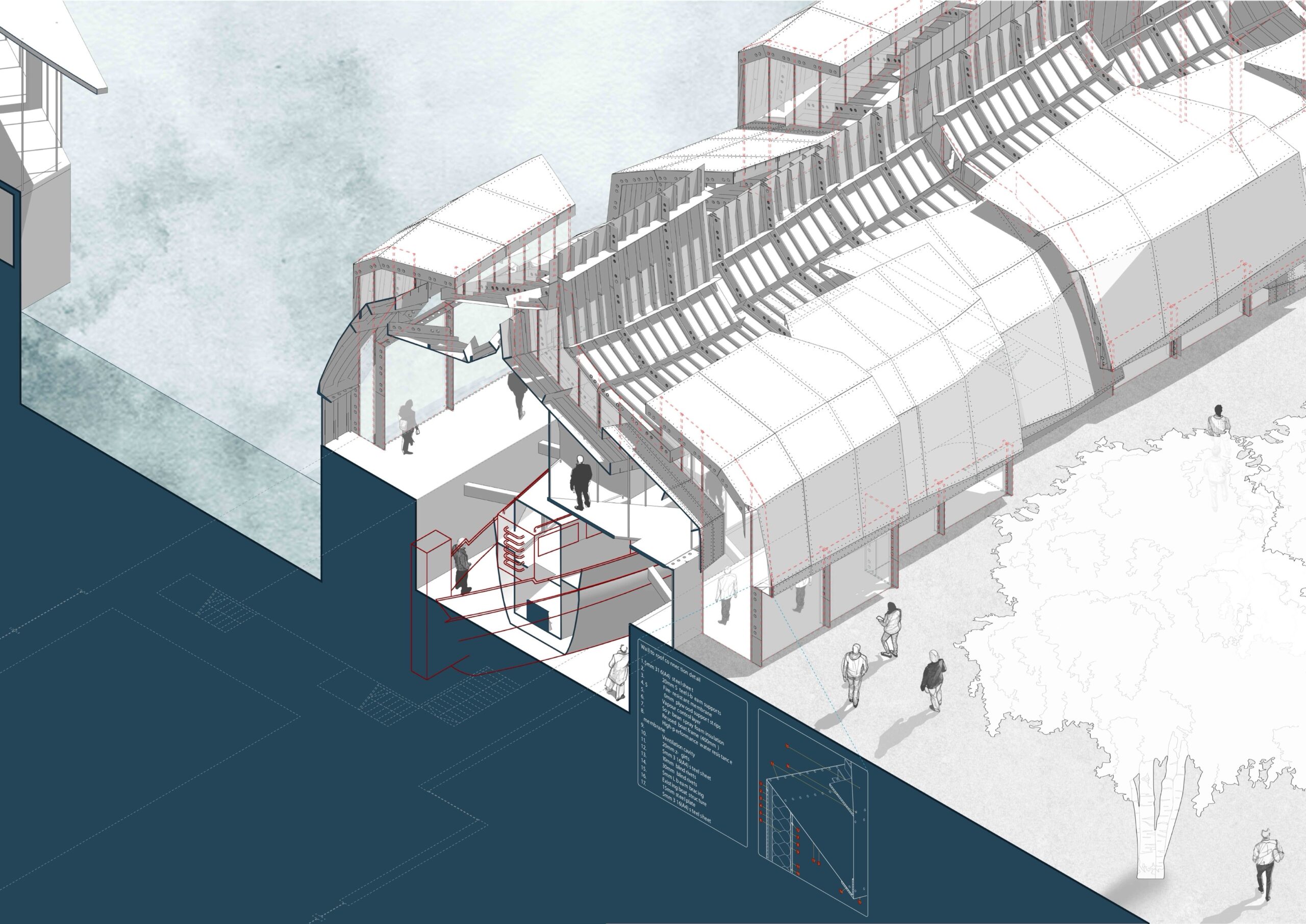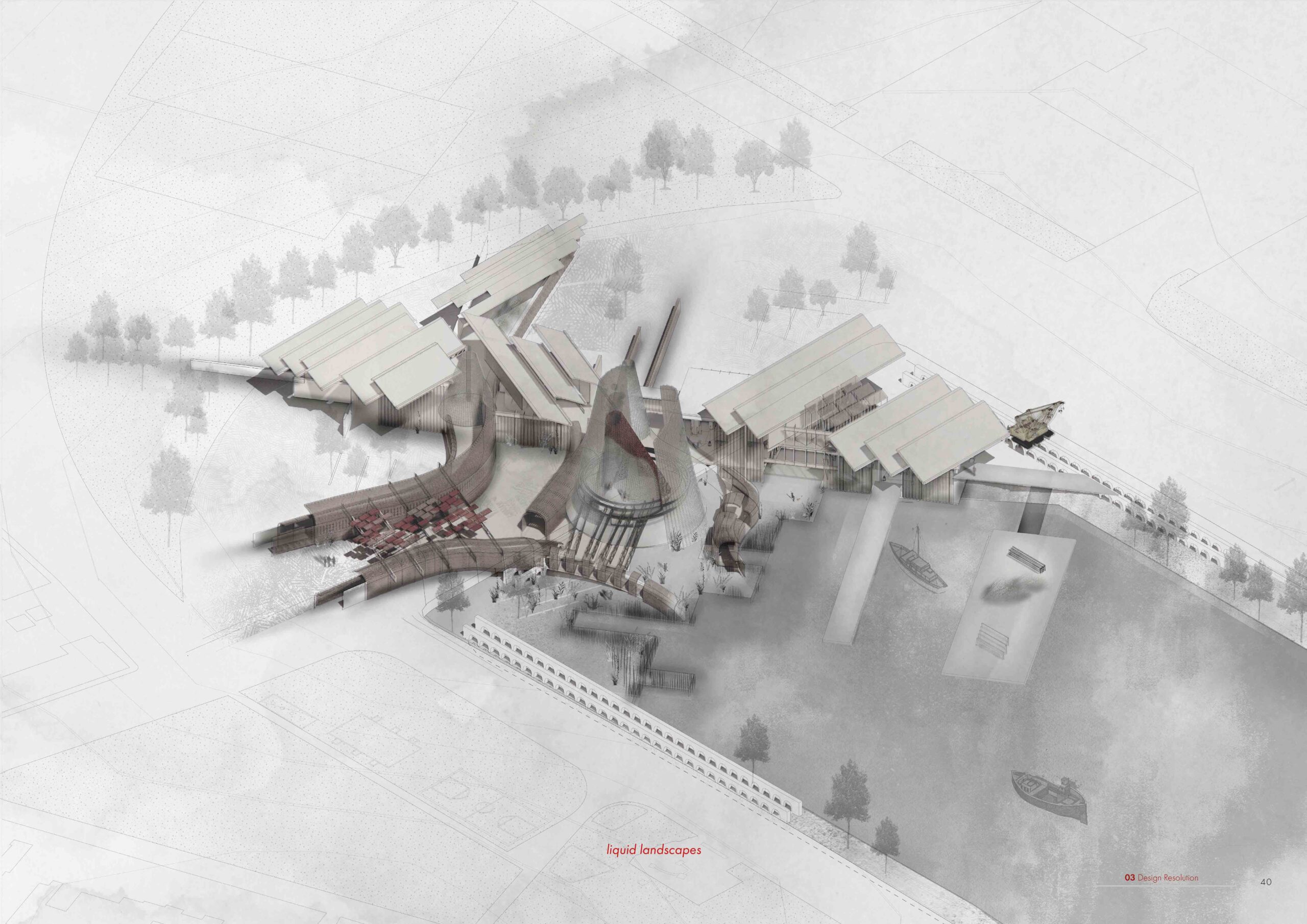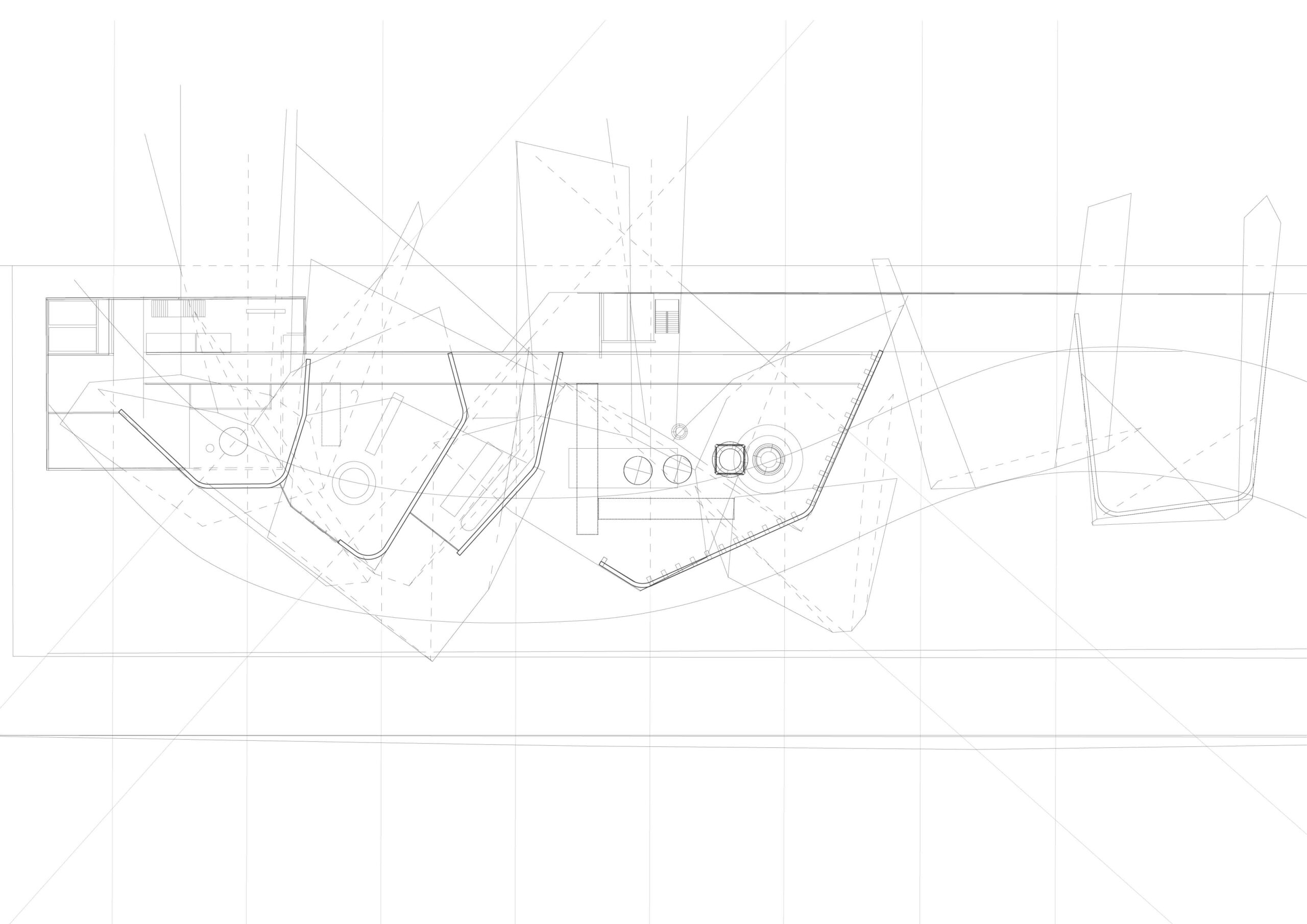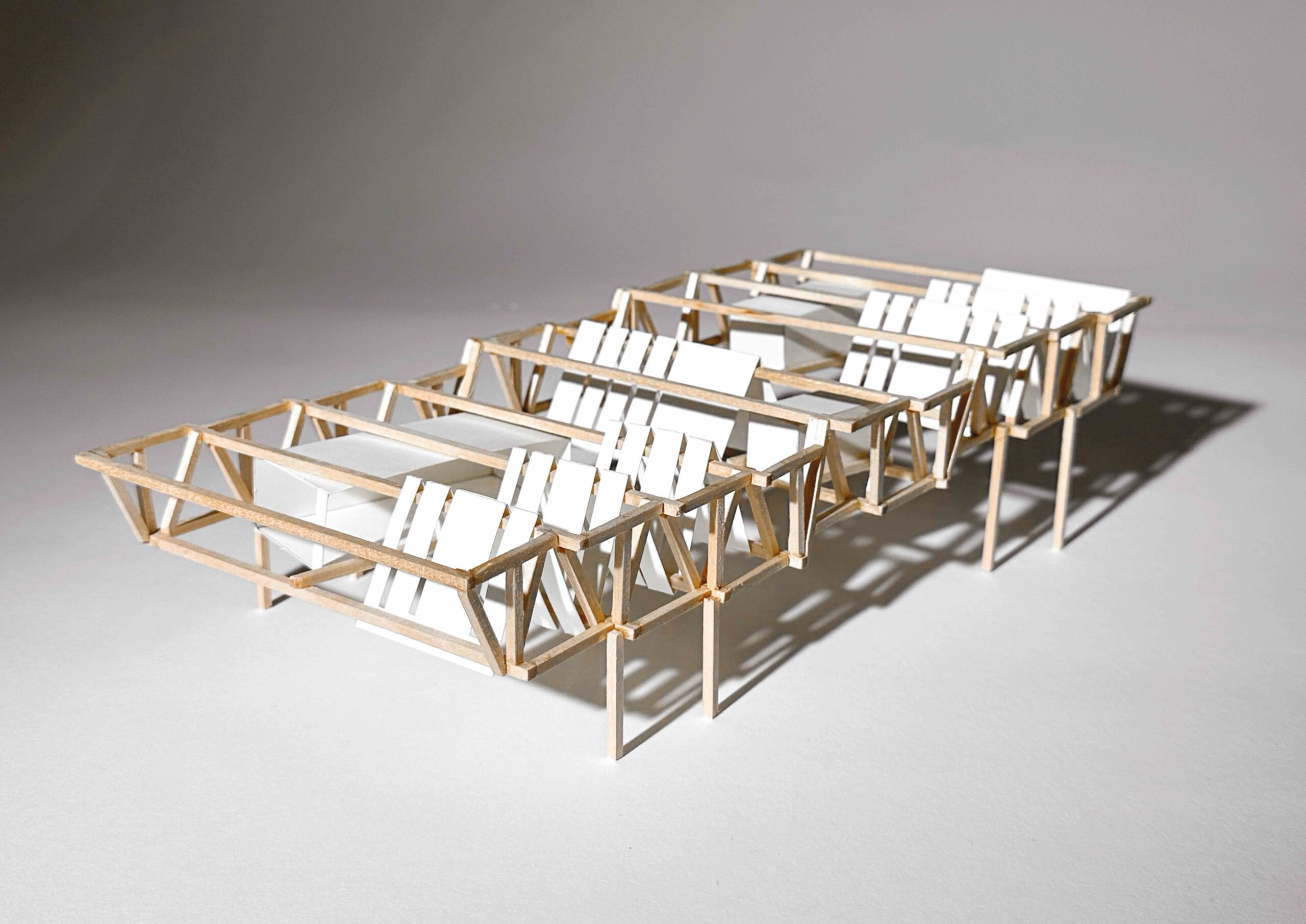Design Studio 23 Master of Architecture (MArch RIBA Part 2)
Richard Difford, François Girardin & David Scott
Richard Difford is an academic with expertise both in creative technologies and architectural history. His teaching focuses on architectural representation, the history of science and mathematics, and the use of electronics and coding in architectural design.
François Girardin has extensive international experience in architecture and is currently involved in teaching design and cultural context. He has specialist interests in material technologies and digital fabrication.
David Scott is an academic and Director of the Fabrication Lab. His interests are in the transformative application of digital technologies to architectural design.
DS23: (Im)material Geometries
Yr1: Poshan Ghale, Sebastian Lloyd-Thomas, Dimitrina Resenska, Elvin Yurt
Yr2: Isabel Atkinson, Manjiri Bhagwatkar, Christopher Collett, Jacob Doherty, William Grose, Milan Lad, Tara Lovering, Mohammad Mahmood, Ana Mitrica, Jessica Morrison, Sumayya Pathan, Sara Tranescu
Described as the geometry of light, projective geometry is grounded in the practical applications to which it has been applied. Yet woven into its complex web of projective relations are also countless opportunities to exploit the way form, space and ideas are transformed as they move through the projective space between representation and its objects. In the words of architectural historian Robin Evans, these are the projective and quasi-projective geometries that link ‘thinking to imagination, imagination to drawing, drawing to building, and buildings to our eyes.’
In DS23 this year, working between material objects and their shadows, maps and representations, we considered the creative opportunities presented by these geometries. Both site and fieldtrip were centred around the Belgium city of Ghent. Comprising a diverse range of conditions for possible projects, from the historic urban centre to surrounding countryside and wetland nature reserves, Ghent is a city rich in architectural and industrial heritage. Built around rivers and canals, the port of Ghent is also the third busiest port in Belgium – continuing the ongoing DS23 project of studying cities organised around a port.
This has provided us with a broad range of programmatic opportunities from museums to factories, sport to agriculture, and theatres to natural landscape. Home to the largest low-traffic pedestrian zone in Europe, Ghent also offered a model for car-free urban environments. So a crucial aspect of this year’s work was to live up to this agenda and address the problem of climate change head-on. And there was much to learn from studying the architecture of Ghent and the nature of the materials with which it was built – their qualities and origin, as well as their environmental credentials (including the famous Ghent brick). In the face of climate change and rising sea levels, our projects also looked at new ways in which architecture can address the fragile balance between water and land, and encourage biodiversity by creating ecologically sensitive environments.
Guest Critics: Toby Burgess, Kate Cheyne, Jami Cresser-Brown, Thomas Hopkins, Maria Kramer, Andrei Martin, Ben Pollock, Yara Sharif, Afolabi Spence










